An appam tawa allows you to make authentic and delicious appams at home, replicating the traditional cooking method used in South Indian households.
An appam tawa is typically made of cast iron or non-stick material and has a unique shape. It features slightly curved or sloping sides and a shallow, circular depression in the center. The depression helps in creating a thick, soft, and fluffy center while maintaining thin, crispy edges of the appam.
To make appam using an appam tawa, the batter is poured onto the center of the tawa and then quickly swirled around, allowing the batter to spread evenly across the entire cooking surface, including the depressed center. The tawa is then covered with a lid to allow the appam to cook evenly.
The shape and design of the appam tawa are specifically tailored to create the distinct texture and appearance of the appam. The depression in the center helps in achieving the characteristic soft and spongy center, while the sloping sides assist in creating the crispy, lace-like edges that are desired in appam.
Typically, Appam is accompanied with coconut chutney, vegetable stew, or any other savoury condiments. It is a popular breakfast or dinner delicacy in Kerala and Tamil Nadu.
What is Appam?
Appam is a traditional South Indian dish that originated in the states of Kerala and Tamil Nadu. It is a type of pancake or crepe made from a fermented batter consisting of rice, coconut, and a small amount of yeast or toddy (a fermented sap). Appams have a striking round shape featuring a soft, pillowy interior and narrow, crisp edges.
To make appams, rice and grated coconut are soaked together, usually overnight, and then ground into a smooth batter. The batter is typically fermented for several hours, allowing it to develop a slightly tangy flavor and airy texture. The fermentation process is aided by the addition of yeast or toddy, which acts as a natural leavening agent.
When ready to cook, the appam batter is poured onto a round appam tawa or pan. The tawa is typically slightly concave, which helps in achieving the characteristic shape of the appam. This allows the batter to expand uniformly resulting in a thicker centre with thin edges that are deliciously crispy.
What is Appam Tawa?
Appam tawa, also known as Appam Chatti or Appachatti, is a specialized cookware used for making a popular South Indian dish called Appam. Appam is a type of pancake or crepe made from fermented rice and coconut batter, traditionally cooked in a rounded shallow pan with a slight indentation in the center.
How to Make Appam in Appam Tawa?
To make appams using an appam tawa, follow these steps:
Prepare the batter: Soak raw rice and grated coconut together in water for around 4-6 hours or overnight. Drain the water and grind the rice and coconut mixture into a smooth batter. You can add a small amount of cooked rice for added texture if desired. Add salt to taste and allow the batter to ferment for at least 6-8 hours or overnight.
Heat the appam tawa: Put the appam tawa over medium heat on the hob. Leave it to warm for a couple of minutes.
Grease the appam tawa: Once the tawa is heated, lightly grease it with some oil or ghee. You can use a brush or a piece of folded kitchen towel to evenly spread the oil/ghee across the surface of the tawa.
Pour the batter: Take a ladleful of the fermented appam batter and pour it onto the center of the hot appam tawa. Immediately, start swirling the tawa in a circular motion to spread the batter evenly across the surface, including the depressed center. The batter should spread in a thin layer with a slightly thicker center.
Cover and cook: Cover the appam tawa with a lid to trap the heat and steam. Allow the appam to cook for 2-3 minutes, or until the edges turn golden and crispy, and the center is cooked through. The appam should be soft and spongy in the center.
Remove and serve: Once the appam is cooked, gently lift it from the tawa using a spatula. Appams are typically served hot. You can stack them on a plate or a traditional appam stack to keep them warm while cooking the remaining appams.
Repeat the process: Repeat the process with the remaining batter, greasing the tawa each time before pouring the batter. Adjust the heat as needed to prevent burning or undercooking.
Appam Tawa Material:
Appam tawas are commonly made of two primary materials: cast iron and non-stick coatings.
Cast Iron: Cast iron appam tawas are durable and excellent at retaining and distributing heat evenly. They provide a consistent heat source that helps in achieving the desired texture and crispness of appams. Cast iron tawas require seasoning before use to develop a non-stick surface and prevent rusting. They can withstand high temperatures and are known for their long lifespan.
Non-stick Coatings: Some appam tawas feature a non-stick coating on the cooking surface, typically made of materials like Teflon or ceramic. Non-stick coatings prevent the batter from sticking to the surface and make it easier to remove the cooked appams without any residue. Non-stick appam tawas are generally lighter in weight and require less oil or ghee for cooking. However, they may not be as durable as cast iron tawas and need to be handled carefully to avoid scratching the non-stick coating.
Both cast iron and non-stick appam tawas have their advantages and considerations. Cast iron tawas offer excellent heat retention and durability, while non-stick tawas provide convenience in terms of easy release and cleaning. The choice between the two depends on personal preferences and cooking needs.
Uses of Appam Tawa:
Appam tawas are specifically designed for making appams, a popular South Indian dish. Here are the primary uses of an appam tawa:
Making Appams: The main purpose of an appam tawa is to cook appams, a type of fermented rice and coconut pancake. The unique shape and design of the tawa help in achieving the characteristic texture and appearance of appams, with a soft and fluffy center and crispy, lace-like edges.
Cooking Variations of Appams: Besides the traditional appams, an appam tawa can also be used to prepare variations of the dish. You can experiment with adding different ingredients to the batter, such as grated vegetables, herbs, or spices, to create variations like vegetable appams or masala appams.
Making Paniyarams: Appam tawas can also be used to make paniyarams, which are small, round, and savory dumplings made from fermented batter. Paniyarams can be made with the same appam batter or with a separate batter made specifically for paniyarams.
Cooking Other Pancakes and Crepes: While appam tawas are primarily used for appams, they can also be used to cook other types of pancakes and crepes. The round shape and shallow depression in the center of the tawa make it suitable for preparing uttapams, dosas, and so on.
Conclusion:
Appam tawa is highly recommended for achieving the authentic shape and texture of the traditional South Indian dish appam. The unique design of an appam tawa helps in creating the distinct soft and fluffy center with crispy edges that characterize appams. You can use Meyer Pre Seasoned Cast Iron 2 Sides Handle Appam Pan to prepare delicious and nutritious appam at home. This appam pan is perfect for the best results and to truly experience the unique characteristics of appams.

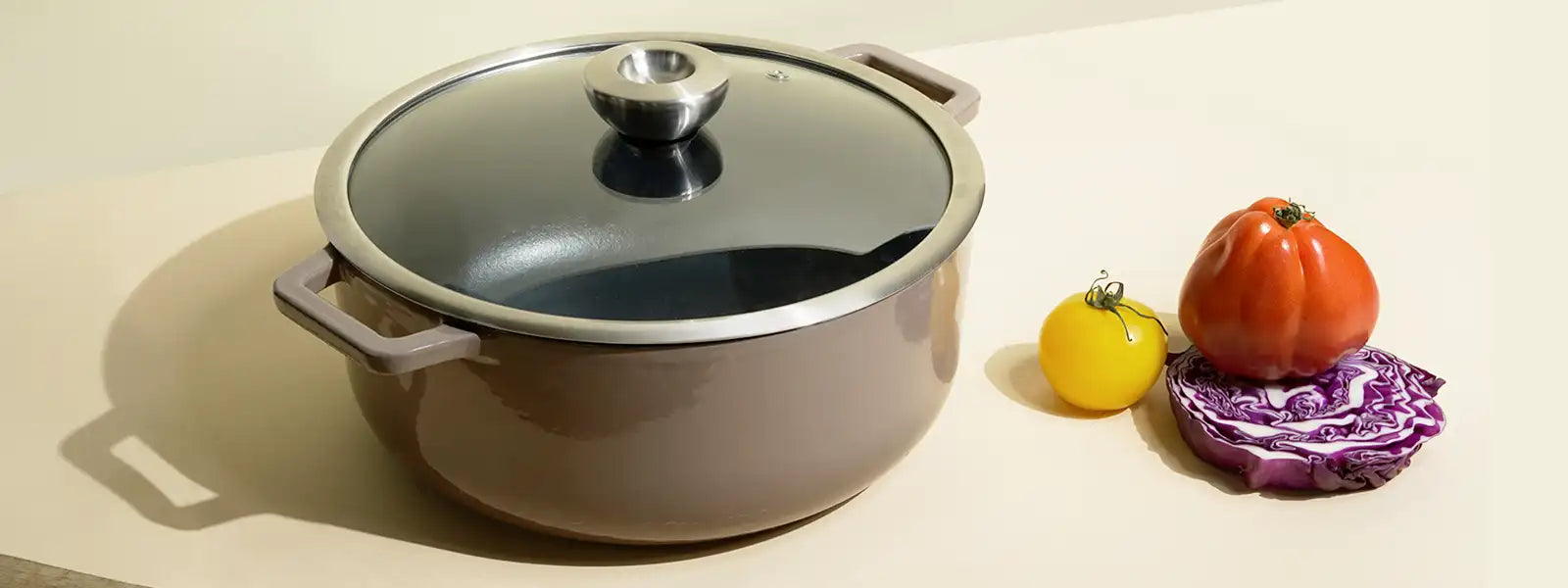
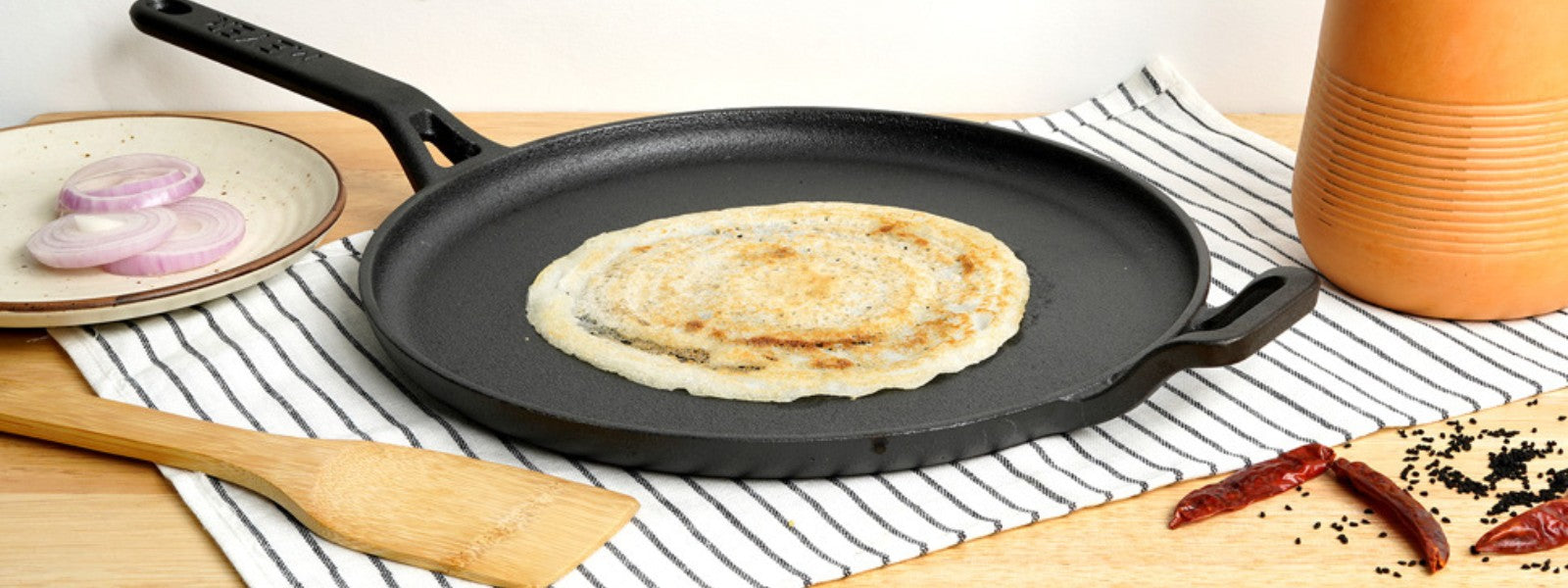
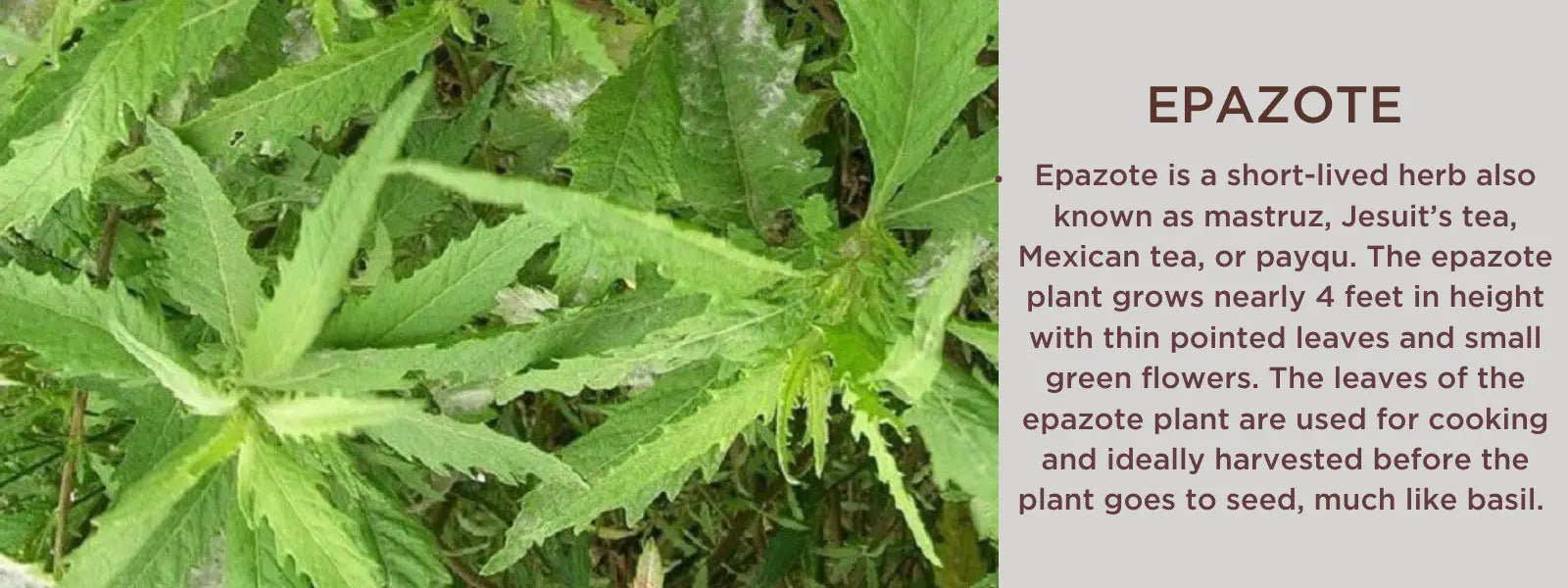
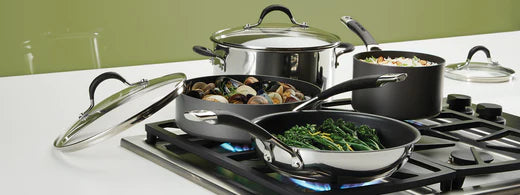
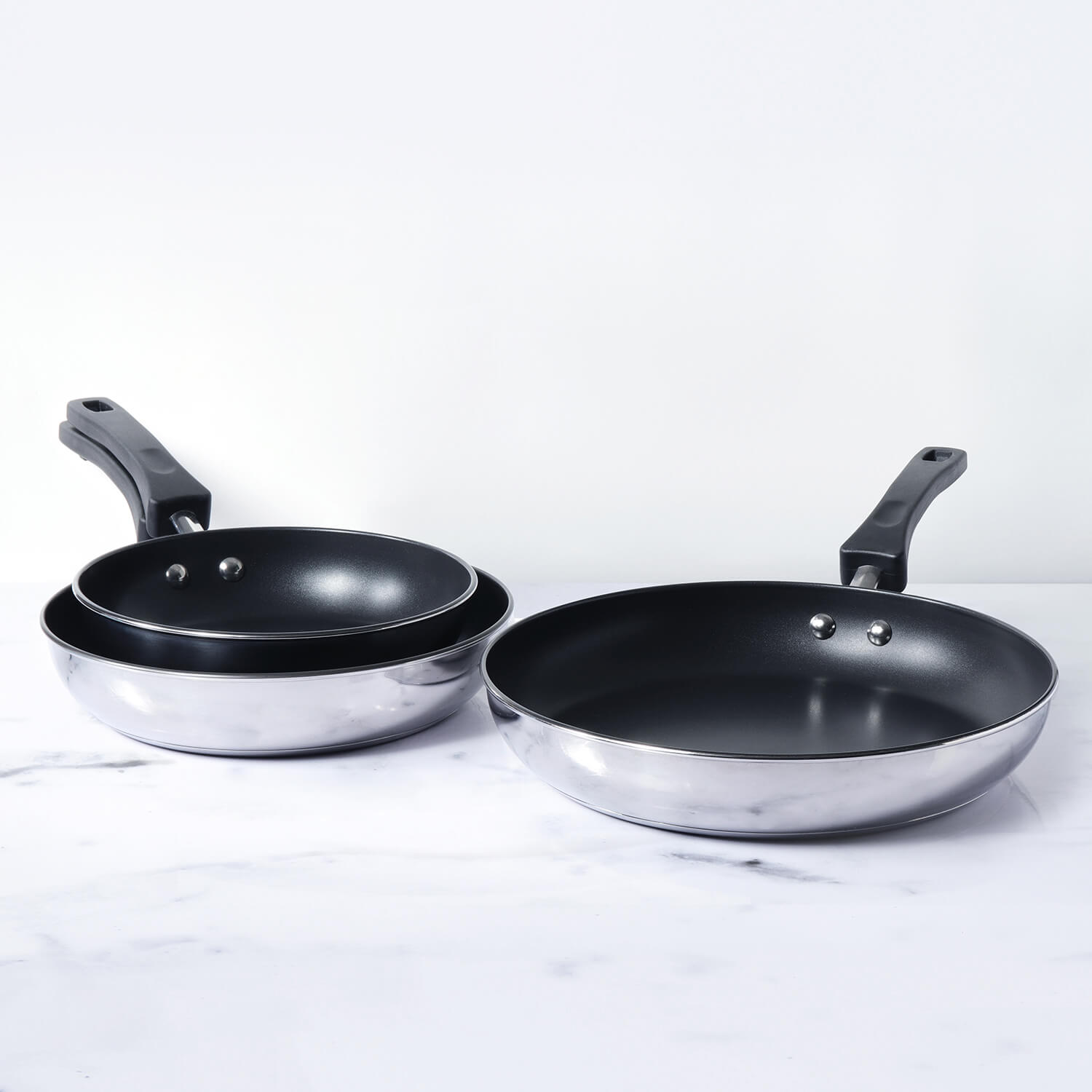




Leave a comment